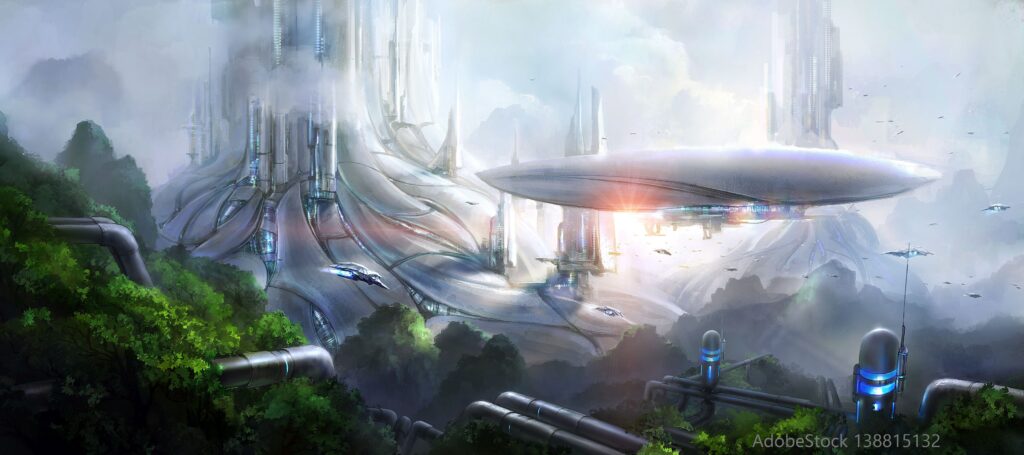 This is an open invitation to ignore the insanity we live in for a minute. One happy minute.
This is an open invitation to ignore the insanity we live in for a minute. One happy minute.
“First Support for a Physics Theory of Life” by Natalie Wolchover is a fascinating article. I was extra delighted to come across it a few weeks ago, the kind that starts me dreaming. I really enjoy large abstract patterns like this, great movements. Hard to test scientifically, I suppose. Beyond me, that’s for sure. I’m only here to play with it, and link it if I can to the development of intelligent life.
First, a primer (or you might want to read the article):
 The second law of thermodynamics states, among other things, that all matter (energy) moves from a state of higher concentration/order to a state of lower concentration/order, tending always towards entropy (if moving forward in time and not all processes are reversible). Like pouring cold milk into a cup of hot tea, you get homogeneity in color and temperature given enough time. Wolchover introduces us to Jeremy England, an associate professor of physics at M.I.T., who says that in some simulations, such as chemical reactions, “the system finds ‘rare states of extremal thermodynamic forcing.’” Okay, as I understand it, this means that there are circumstances where the system is so dynamic and complex (a lot going on with a lot of matter) that the diffusion process snags, and when it snags, the system may in rare instances (places) be forced into a higher energy state—greater order and heat—and while in this state, may itself trigger an accelerated burn-off of stored energy. So, it looks like the rule is broken, but it’s not: this higher-energy configuration accelerates the process of diffusion within its own sphere of influence and ultimately leads to more energy burn-off. Or, another way of looking at it, possibly: higher-ordered structures cause greater damage (disorder). Yay! Clear as mud! Well, that’s the extent of my understanding of it.
The second law of thermodynamics states, among other things, that all matter (energy) moves from a state of higher concentration/order to a state of lower concentration/order, tending always towards entropy (if moving forward in time and not all processes are reversible). Like pouring cold milk into a cup of hot tea, you get homogeneity in color and temperature given enough time. Wolchover introduces us to Jeremy England, an associate professor of physics at M.I.T., who says that in some simulations, such as chemical reactions, “the system finds ‘rare states of extremal thermodynamic forcing.’” Okay, as I understand it, this means that there are circumstances where the system is so dynamic and complex (a lot going on with a lot of matter) that the diffusion process snags, and when it snags, the system may in rare instances (places) be forced into a higher energy state—greater order and heat—and while in this state, may itself trigger an accelerated burn-off of stored energy. So, it looks like the rule is broken, but it’s not: this higher-energy configuration accelerates the process of diffusion within its own sphere of influence and ultimately leads to more energy burn-off. Or, another way of looking at it, possibly: higher-ordered structures cause greater damage (disorder). Yay! Clear as mud! Well, that’s the extent of my understanding of it.
Life itself may be the result of this “forcing,” England suggests. According to the article, England sees “the essence of living things as the exceptional arrangement of their component atoms”—so, he seems to be saying that a fluctuation/snag along the drive towards greater dissipation of energy can result in the creation of more-complex energy consumers, which are then energy dispersers in their own right. And sometimes these consumers self-replicate. It’s not hard to imagine a star or a thermal vent providing the necessary external energy input he says is required (looks like the first law of thermodynamics is implicated, too).
Yeah, I don’t know. Neither do they. This is an emerging line of inquiry.
England calls the process “rare fixed points of extreme forcing.” There are counterarguments. These basically state that it’s too much of a leap to go from lumpy, self-organizing, energy-infused, chaotic systems to life with the capacity to replicate and, importantly, relocate itself.
 The article reminded me of an argument my husband and I had about extra-terrestrial intelligent life and what form it will have when we meet it—basically, whether it will be more or less like us. I say “more.” He says “less.” My argument centers on whether we’re traveling to this life-form when we meet, or it’s traveling to us (or at least beyond its home). If we’re traveling to it, all bets are off, and I have to agree with him. But if it’s a traveler, in my opinion, it’s going to be a lot like us.
The article reminded me of an argument my husband and I had about extra-terrestrial intelligent life and what form it will have when we meet it—basically, whether it will be more or less like us. I say “more.” He says “less.” My argument centers on whether we’re traveling to this life-form when we meet, or it’s traveling to us (or at least beyond its home). If we’re traveling to it, all bets are off, and I have to agree with him. But if it’s a traveler, in my opinion, it’s going to be a lot like us.
My husband gave as examples that there might be living planets and colonial organisms like slime molds or those aspens in Utah. To get a sense of how they might develop intelligence, though, we’d need to imagine how inquisitiveness and learning would benefit the survival of such an organism. Intelligence is all about the capacity to slice-and-dice reality and make a tasty salad of it rather than simply react. It probably matters whether an organism evolves out a defensive posture or an offensive one, whether its evolution focuses more on how to be the best taker of resources or how best to prevent itself from being taken as a resource. What are the evolutionary drivers of a tree with a collective root system? Its enemies are likely disease, some fungi, some insects, fire, and some humans. It’s in a defensive posture. If these enemies come in small numbers over a long period of time, the damage is manageable through mechanical adaptation. If they come too fast and in large numbers, the damage will be devastating—no time for any sort of adaptation. An evolutionary driver mustn’t kill too quickly, or too slowly, and if you want intelligence, you probably need to focus on how to be a better taker. Mobility is crucial. With respect to finding new resources, in humans, curiosity and mobile adaptability have made all the difference.
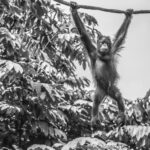 On our planet, without question, humans are the dominant complex organism. My present understanding is that we evolved from a species that used to swing in trees. Specifically, swinging. The position of our eyes on our heads says the need for depth perception was likely a huge evolutionary driver: to survive, we had to move through the air at speed, grasping. Any species that can willingly leave its home planet probably has evolved from a species that experienced a terrible episodic necessity to leave its original habitat, at speed, while grasping. This necessity would likely be due to predators (a natural disaster might fit the bill for a nemesis, like a loss of something to swing from, but it wouldn’t provide the kind of long-term variability we’re looking for). Then, later, the dominant species becomes its own most formidable predator. The more skilled, dangerous, and versatile the predator, the greater the evolutionary push towards intelligence. A feedback loop is ideal. But not only intelligence: there will be other traits. By now, we are our most dangerous adversary and most useful ally; we compete and cooperate for limited resources. To get this far, we’ve developed anxiety and aggression and fear, but also a great capacity for empathy and a desire to help, because we also absolutely depend on one another, and our natural environment. But still, curiosity is at its core utilitarian: it’s about resource acquisition and management.
On our planet, without question, humans are the dominant complex organism. My present understanding is that we evolved from a species that used to swing in trees. Specifically, swinging. The position of our eyes on our heads says the need for depth perception was likely a huge evolutionary driver: to survive, we had to move through the air at speed, grasping. Any species that can willingly leave its home planet probably has evolved from a species that experienced a terrible episodic necessity to leave its original habitat, at speed, while grasping. This necessity would likely be due to predators (a natural disaster might fit the bill for a nemesis, like a loss of something to swing from, but it wouldn’t provide the kind of long-term variability we’re looking for). Then, later, the dominant species becomes its own most formidable predator. The more skilled, dangerous, and versatile the predator, the greater the evolutionary push towards intelligence. A feedback loop is ideal. But not only intelligence: there will be other traits. By now, we are our most dangerous adversary and most useful ally; we compete and cooperate for limited resources. To get this far, we’ve developed anxiety and aggression and fear, but also a great capacity for empathy and a desire to help, because we also absolutely depend on one another, and our natural environment. But still, curiosity is at its core utilitarian: it’s about resource acquisition and management.
The result? For us, our minds grow strong as our bodies grow weak. Any alien species that evolves problem-solving and resource-management skills enough to want to travel beyond its world, and is able to pull it off, will probably have evolved in a very similar fashion with similar inclinations and divisions within its populace, and probably even have a similar outward appearance. The check: whatever is energy efficient will win out due to resource limitations—two eyes for depth perception that evolve out of fleeing from predators quickly through the air while grasping, with ties to hard terrain for resources, a central brain housed separate from relatively expendable appendages, etc., etc.
They will either be like us in form, or have hijacked an organism that is like us in form. They will have similar attitudes and goals.
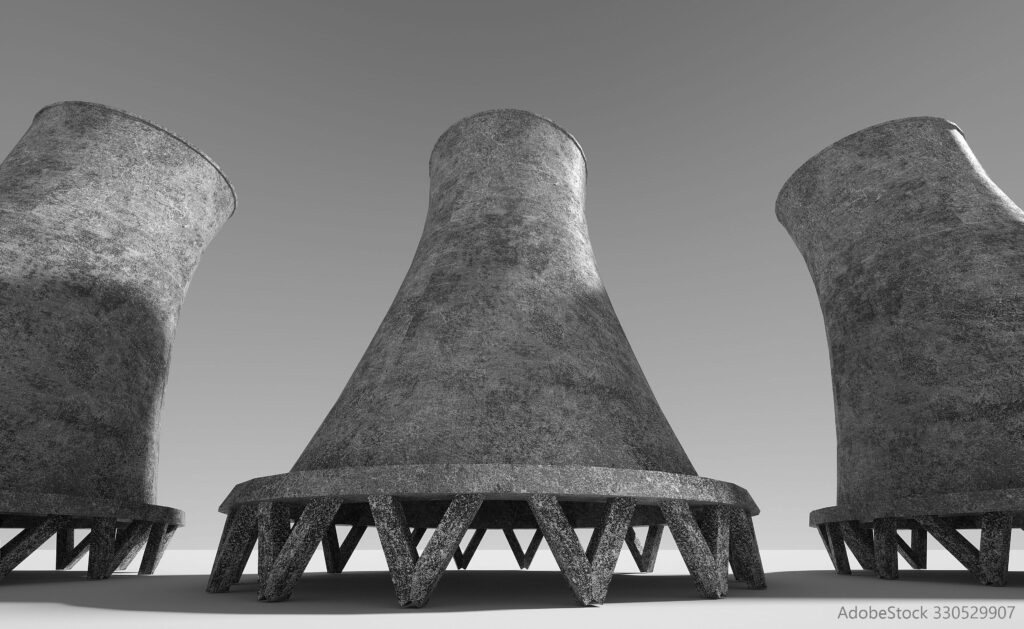 Like humans, these beings will have adopted cultural belief-systems to replace instinct. Why? Because culture can change rapidly, if necessary, but also endure mostly intact over many generations, for thousands of years. Our cultures have allowed us to share and add to our skills, and have aided us as predators, as takers. From the start, our communication skills have allowed us to work as a team, and yet our communication limitations have allowed us to differentiate our behaviors widely, to create mini-cultures within larger cultures—little tests for fitness. Any species that perfectly adapts to a system will always be on the evolutionary chopping block, so to speak, because, as they say, “the only constant is change.” So, any dominant species on a planet will have adapted to adaptation, as we have, through culture, not instinct—and a healthy variety of cultures, at that. A successful species will never put all its genetic and cultural eggs in one basket—it will have mechanisms to create discord and prevent this.
Like humans, these beings will have adopted cultural belief-systems to replace instinct. Why? Because culture can change rapidly, if necessary, but also endure mostly intact over many generations, for thousands of years. Our cultures have allowed us to share and add to our skills, and have aided us as predators, as takers. From the start, our communication skills have allowed us to work as a team, and yet our communication limitations have allowed us to differentiate our behaviors widely, to create mini-cultures within larger cultures—little tests for fitness. Any species that perfectly adapts to a system will always be on the evolutionary chopping block, so to speak, because, as they say, “the only constant is change.” So, any dominant species on a planet will have adapted to adaptation, as we have, through culture, not instinct—and a healthy variety of cultures, at that. A successful species will never put all its genetic and cultural eggs in one basket—it will have mechanisms to create discord and prevent this.
A dominant species (us and any other space-faring race) will maximize resource consumption—aka, energy. I say, look at how we are now hunting for ever greater and more efficient energy fuel sources that don’t compromise our other resources and don’t deplete quickly. We can’t swing to another tree yet, so we need to adapt to the limitations of this one. But if we could move on before we wreck the place, wouldn’t we? You know we would. Which would be a dissipation of our disintegration efforts, spreading out the drive towards entropy, dispersing it, though this dispersal would look like “development.”
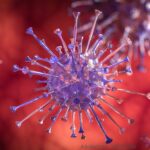 This article reminded me of another theory about the purpose (or drive) of life, a little pet theory I had in my early twenties and shared with author and poet James Dickey. Once, while he stood in the corner of his office, he asked me if there was anything I was ruminating on lately. It was a really abrupt question. It felt like a test. But I had an answer. I was a little reluctant to tell him, though, because my friends were often annoyed with me and my pet theories. But I told him. I told him that I’d been considering whether the true dominant life-form on this planet was in fact the virus, as the simplest form of life, and that we humans had evolved merely to spread this most basic form of life off planet. Our bodies, our minds, our petty squabbles, our desperate reaching for the stars—all of it, I said, might be to serve this one purpose. We may be a byproduct. When our ships travel to new solar systems, we’ll arrive, we may colonize, we’ll move on or die out, we’ll leave a few traces, but the most enduring, the only structure that might actually live to hop even further, could be the virus: the real astronaut. Dickey’s face kind of lit up, in a half-wicked way it sometimes did. He liked my theory for its theory-ness, I suppose, for the spirit of play; he said I had the right way of looking at things, that I’d “be all right.” (I’ve been reading his book Alnilam lately, slowly, for the first time, and have come to realize I may have passed a few other tests of his back then—and I may have failed a biggie. I had not read Alnilam at the time, which he no doubt picked up on when I failed to comment on all those tests!)
This article reminded me of another theory about the purpose (or drive) of life, a little pet theory I had in my early twenties and shared with author and poet James Dickey. Once, while he stood in the corner of his office, he asked me if there was anything I was ruminating on lately. It was a really abrupt question. It felt like a test. But I had an answer. I was a little reluctant to tell him, though, because my friends were often annoyed with me and my pet theories. But I told him. I told him that I’d been considering whether the true dominant life-form on this planet was in fact the virus, as the simplest form of life, and that we humans had evolved merely to spread this most basic form of life off planet. Our bodies, our minds, our petty squabbles, our desperate reaching for the stars—all of it, I said, might be to serve this one purpose. We may be a byproduct. When our ships travel to new solar systems, we’ll arrive, we may colonize, we’ll move on or die out, we’ll leave a few traces, but the most enduring, the only structure that might actually live to hop even further, could be the virus: the real astronaut. Dickey’s face kind of lit up, in a half-wicked way it sometimes did. He liked my theory for its theory-ness, I suppose, for the spirit of play; he said I had the right way of looking at things, that I’d “be all right.” (I’ve been reading his book Alnilam lately, slowly, for the first time, and have come to realize I may have passed a few other tests of his back then—and I may have failed a biggie. I had not read Alnilam at the time, which he no doubt picked up on when I failed to comment on all those tests!)
We know that there are proteins that can self-replicate called prions, and tiny cellular structures that move mechanically within our cells, seemingly on their own. Kinetic, if I remember correctly, like those amazing sculptures by Theo Jansen. Life can be structurally very small, so small as to challenge our definition of life. And large, possibly, as large as a planet.
But if we go back to the idea that life is a higher-ordered system that ironically leads to greater overall entropy, we could argue that there are patterns within patterns here, and that smaller life begets larger life in its own self-ordering process. Resource acquisition and management: that’s what it’s all about. Since we humans have started tinkering with the structure of matter itself (which we were almost certainly destined to do), it really begs the question: where do we go from here? Another planet, do a sort of rinse and repeat? What vast energy consumer is tapping us? What is the epiphenomenon on top of us?
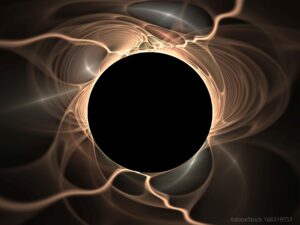 According to Sara Walker—a theoretical physicist and origins-of-life specialist at Arizona state University, who’s cited in the article—the key distinction between life and England’s dissipation-driven adaptation process is that “life forms take in and respond to information in their environment.” What if this is how higher-order life forms create the next higher-energy order, that in turn burns more energy? Cosmic libraries? We’d be the burners and the burning that supports them. Curiosity itself might become our master. Walker’s statement has led me to consider whether the highest ordering of energy might be information itself—sustained chemically or in whatever configuration possible. Ever greater minds. I don’t know. I’m definitely reaching here. Can information itself shatter with a bang? Literally? I heard that information is lost in black holes, according to some theory mentioned on How the Universe Works, when black holes radiate energy back out, but disconnected from its history (?)—supposedly, this cosmic loss of information shouldn’t happen. But I don’t see how that fits, or how intelligent life in particular fits into the equation. It’d be quite the unraveling, though. What does this “information” even look like in its purest form? Ghosts outside of the machine? The Akashic record? We should probably go read/re-read Greg Egan’s Diaspora. Or Carl Sagan’s Contact. Or the I-Ching. Or maybe I’m just having a wacky day.
According to Sara Walker—a theoretical physicist and origins-of-life specialist at Arizona state University, who’s cited in the article—the key distinction between life and England’s dissipation-driven adaptation process is that “life forms take in and respond to information in their environment.” What if this is how higher-order life forms create the next higher-energy order, that in turn burns more energy? Cosmic libraries? We’d be the burners and the burning that supports them. Curiosity itself might become our master. Walker’s statement has led me to consider whether the highest ordering of energy might be information itself—sustained chemically or in whatever configuration possible. Ever greater minds. I don’t know. I’m definitely reaching here. Can information itself shatter with a bang? Literally? I heard that information is lost in black holes, according to some theory mentioned on How the Universe Works, when black holes radiate energy back out, but disconnected from its history (?)—supposedly, this cosmic loss of information shouldn’t happen. But I don’t see how that fits, or how intelligent life in particular fits into the equation. It’d be quite the unraveling, though. What does this “information” even look like in its purest form? Ghosts outside of the machine? The Akashic record? We should probably go read/re-read Greg Egan’s Diaspora. Or Carl Sagan’s Contact. Or the I-Ching. Or maybe I’m just having a wacky day.
I hope you enjoyed this. Fun, fun, fun! I’ll be right here, editing away. Unless there’s a hurricane. Take care!
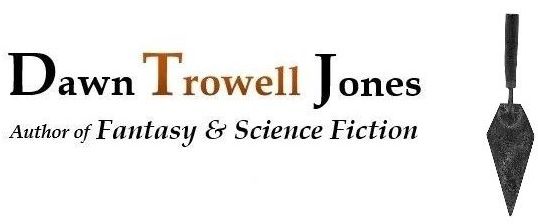

Pingback: The Ordered Chaos of “Odd Wheels” — and Novels! – Dawn Trowell Jones